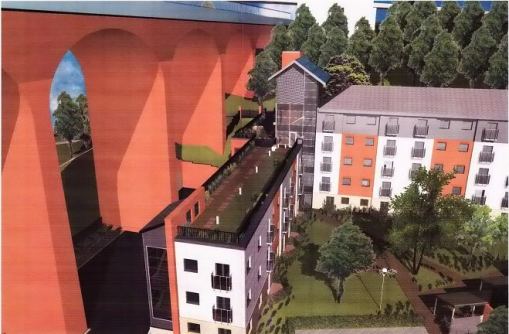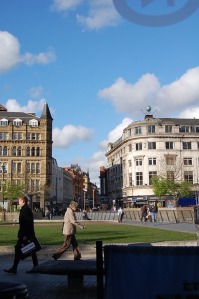By Scott Gibson
During a trip to Scotland in my Easter break, I drove over to Glasgow to look at an example of the development of a neighbourhood centre as part of my supermarket led regeneration design thesis. My decision to go there was influenced by the project being referred to in a study on retailing, sustainability and regeneration as a good example of a design led development.
The Crown Street Regeneration Project is based on a masterplan produced in the 1990s to redevelop a former area of social housing which was unaffectionately referred to by locals as the ‘dampies’. The key features of the masterplan was for new development to be based on traditional tenement blocks, enclosing private communal gardens and to include retail, community facilities, a hotel and business premises. One of the key objectives was to introduce a traditional street pattern with new retail units, including a supermarket, fronting onto a ‘high street’ (which is actually Crown Street itself). The housing by its nature of being developed in tenement blocks would create a density high enough to support these facilities, whilst the mix of uses would create the diversity necessary to attract new people to this area.
Unfortunately my vision of seeing a supermarket, nicely designed and integrated within a high street environment was horribly dashed when I arrived to see a ‘box’, albeit one which had some other retail units along the Crown Street frontage. The rest of the development has blank walls to the side and an empty car park, service bay and rear entrance in the space between the development and adjacent major road. Thankfully, other retail units had been integrated well into new housing blocks facing Crown Street. Since I returned, further reading has allowed me to discover that the masterplan had planned for a supermarket with a rooftop car park to give the height and scale to Crown Street in a similar way to its tenement block counterparts. Unfortunately, the good intentions of the mastreplan were sacrificed to attract developer interest and this highlights the importance of ensuring that a masterplan can be delivered after it is produced.











 Northern Architecture
Northern Architecture Project for Public Spaces
Project for Public Spaces Urban Design Group
Urban Design Group